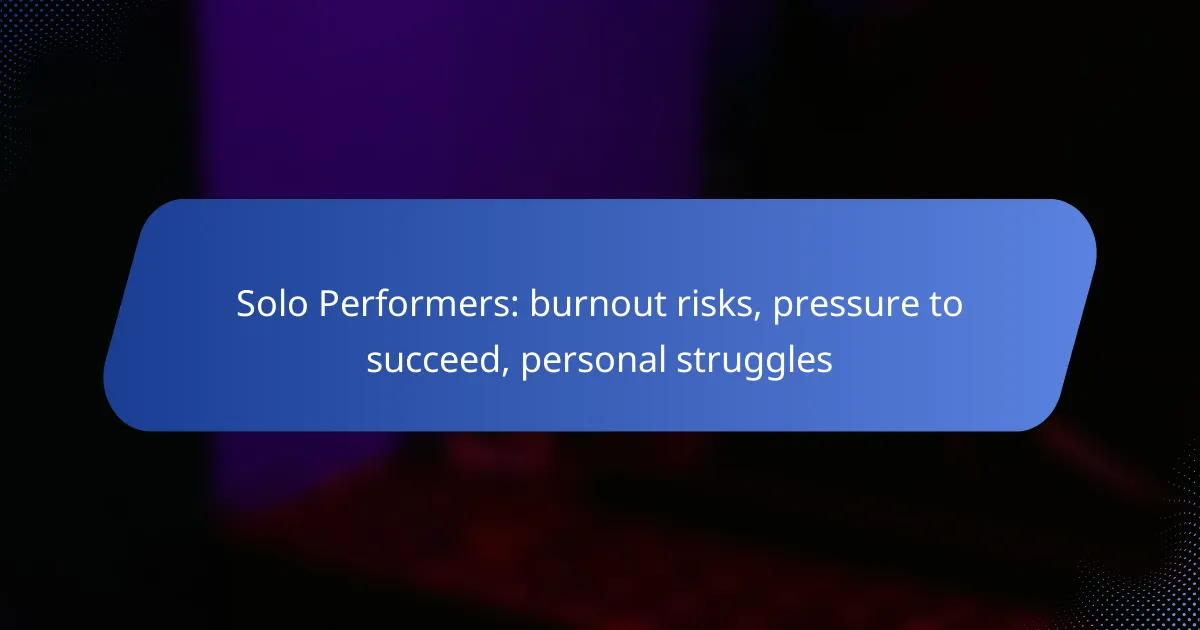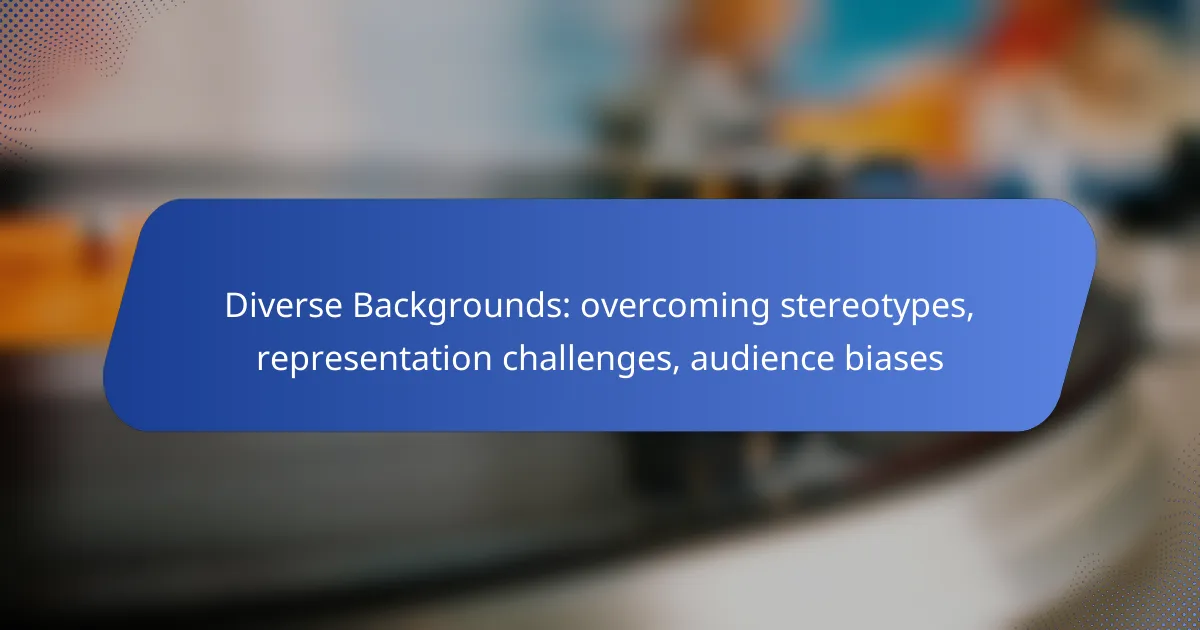Cultural icons often navigate a complex landscape of cultural appropriation, representation issues, and legacy pressures. The adoption of cultural elements by those in power can lead to misrepresentation and commodification, raising ethical concerns about authenticity and respect. Addressing these challenges is essential for promoting genuine representation and honoring the heritage of marginalized communities.
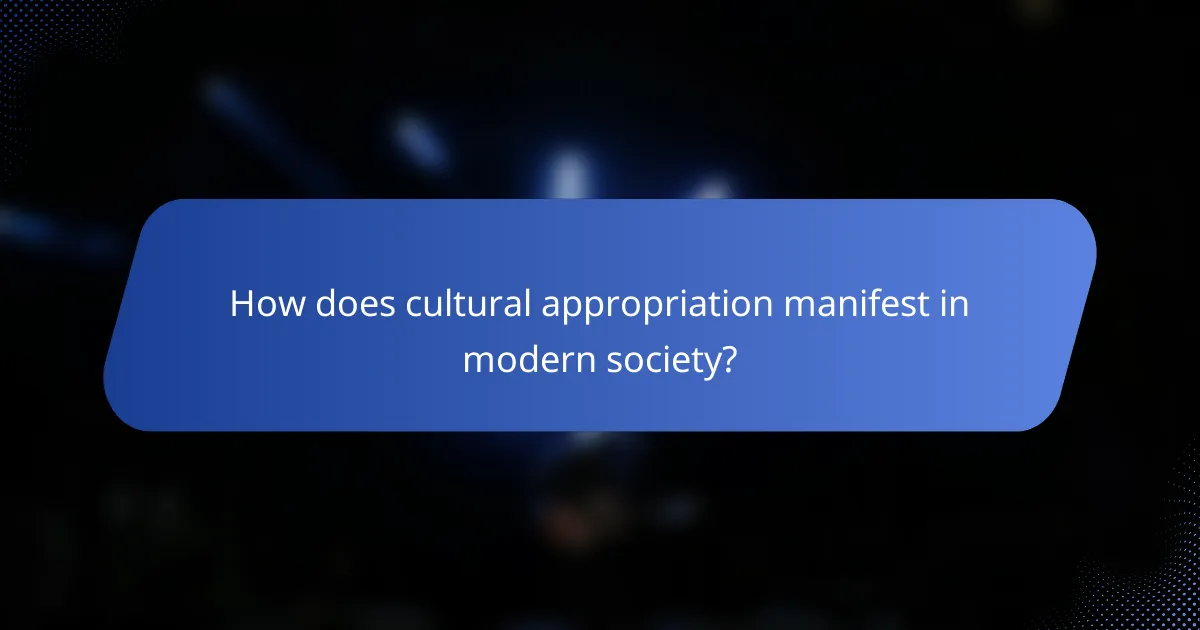
How does cultural appropriation manifest in modern society?
Cultural appropriation in modern society often appears as the adoption of elements from one culture by individuals or groups, particularly those in a position of power. This practice can lead to misrepresentation and commodification of the original culture, raising ethical concerns about respect and authenticity.
Fashion industry examples
The fashion industry frequently showcases cultural appropriation through designs that borrow from traditional attire without proper acknowledgment. For instance, high-end brands may feature Native American headdresses or African prints, often stripping these elements of their cultural significance. This not only disrespects the original cultures but can also lead to backlash from communities who feel their heritage is being exploited.
Brands should consider collaborating with cultural representatives to ensure respectful representation. Engaging in dialogue with the communities involved can help avoid missteps and foster a more inclusive approach to fashion.
Music and performance contexts
In music, cultural appropriation can manifest when artists adopt styles or genres from cultures outside their own, often without understanding their historical context. For example, pop artists may incorporate reggae or hip-hop elements while failing to credit their origins, leading to accusations of exploitation. This not only affects the artists from the original cultures but can also dilute the genre’s authenticity.
Artists should strive to educate themselves about the cultures they draw from and seek to collaborate with artists from those backgrounds. This practice not only enriches their work but also promotes cultural appreciation over appropriation.
Social media trends
Social media platforms often amplify cultural appropriation through viral trends that mimic cultural practices without context. For instance, dance challenges may borrow from traditional dances, leading to a lack of recognition for their origins. This can trivialize the cultural significance behind these movements and alienate the communities they represent.
Users should be mindful of the cultural roots of trends they participate in and consider giving credit where it’s due. Engaging with the original culture through education and respectful sharing can help mitigate appropriation and foster understanding.
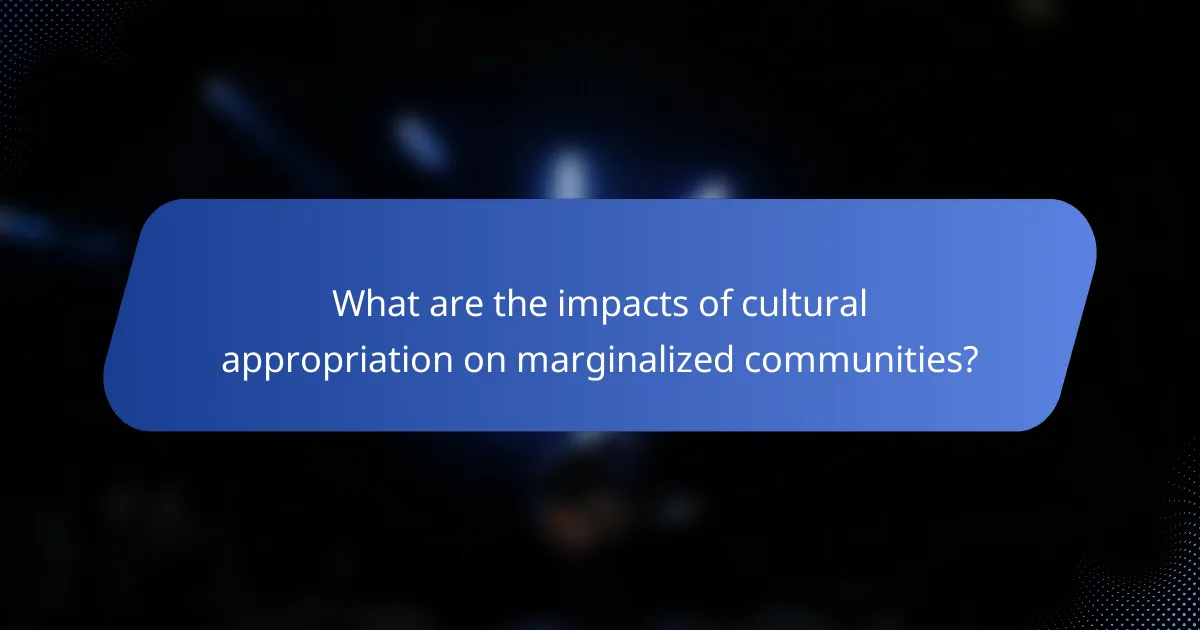
What are the impacts of cultural appropriation on marginalized communities?
Cultural appropriation negatively affects marginalized communities by undermining their cultural heritage and identity. It often leads to the commodification of their traditions, resulting in economic and social disparities.
Economic implications
Cultural appropriation can lead to significant economic disadvantages for marginalized communities. When elements of their culture are adopted without permission, it often results in profits that do not benefit the original creators. For instance, fashion brands may profit from traditional designs while the artisans who created them remain unrecognized and uncompensated.
Additionally, this appropriation can stifle local economies. When outsiders capitalize on cultural symbols, it can divert attention and resources away from local businesses that rely on authentic cultural expressions. This can lead to a decline in sales for these businesses, further exacerbating economic inequalities.
Identity and representation issues
Cultural appropriation raises significant identity and representation concerns for marginalized communities. When their cultural symbols are used inappropriately, it can distort the meaning and significance of those symbols, leading to misrepresentation in mainstream culture. This often results in stereotypes that do not reflect the true essence of the culture.
Moreover, the lack of authentic representation can diminish the voices of those within the community. When outsiders dominate the narrative, it can perpetuate a cycle where marginalized groups are further marginalized, affecting their ability to share their stories and experiences authentically. It is crucial for media and industries to prioritize genuine representation to foster understanding and respect for diverse cultures.
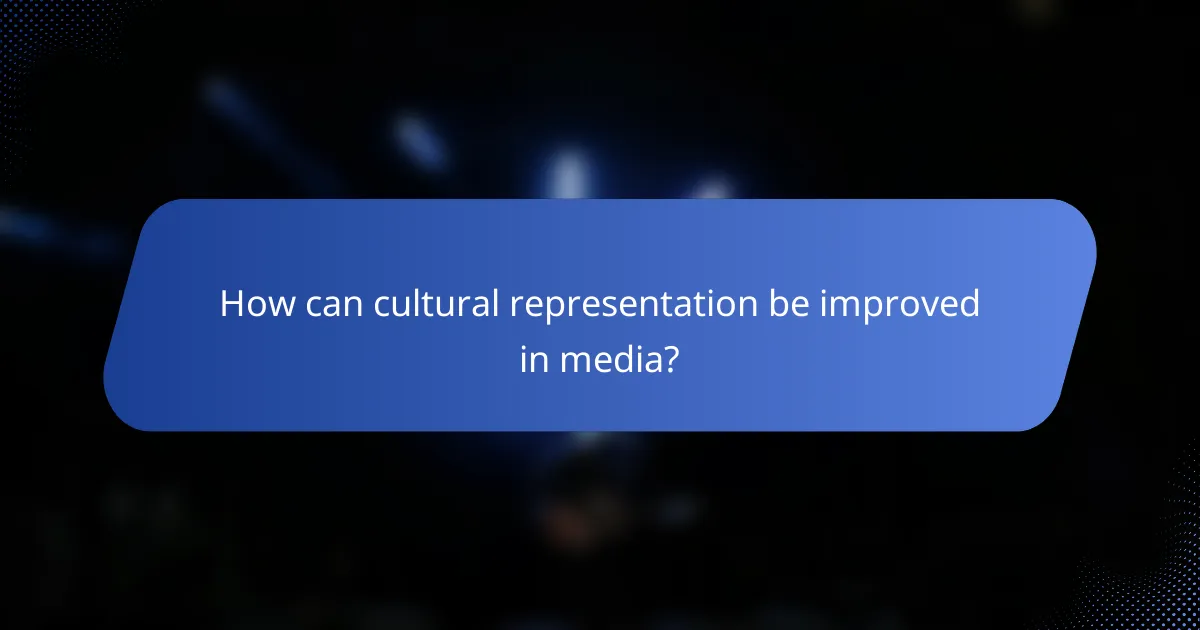
How can cultural representation be improved in media?
Improving cultural representation in media involves actively promoting diversity in casting and ensuring authentic storytelling. By prioritizing these elements, creators can better reflect the richness of different cultures and avoid harmful stereotypes.
Diverse casting practices
Diverse casting practices are essential for accurate cultural representation. This means hiring actors from the backgrounds being portrayed, which not only enhances authenticity but also provides opportunities for underrepresented groups in the industry.
To implement diverse casting, consider using open casting calls that specifically invite actors from various cultural backgrounds. Avoid tokenism by ensuring that the roles reflect the complexity of the characters’ cultures, rather than relying on clichés.
Authentic storytelling
Authentic storytelling requires collaboration with cultural consultants and creators who have lived experience of the cultures being depicted. This approach helps to ensure that narratives are respectful and nuanced, rather than superficial or stereotypical.
When developing stories, engage with community members and experts to gather insights and feedback. This can involve workshops or focus groups that allow for genuine dialogue and understanding of cultural nuances, leading to richer and more accurate portrayals in media.
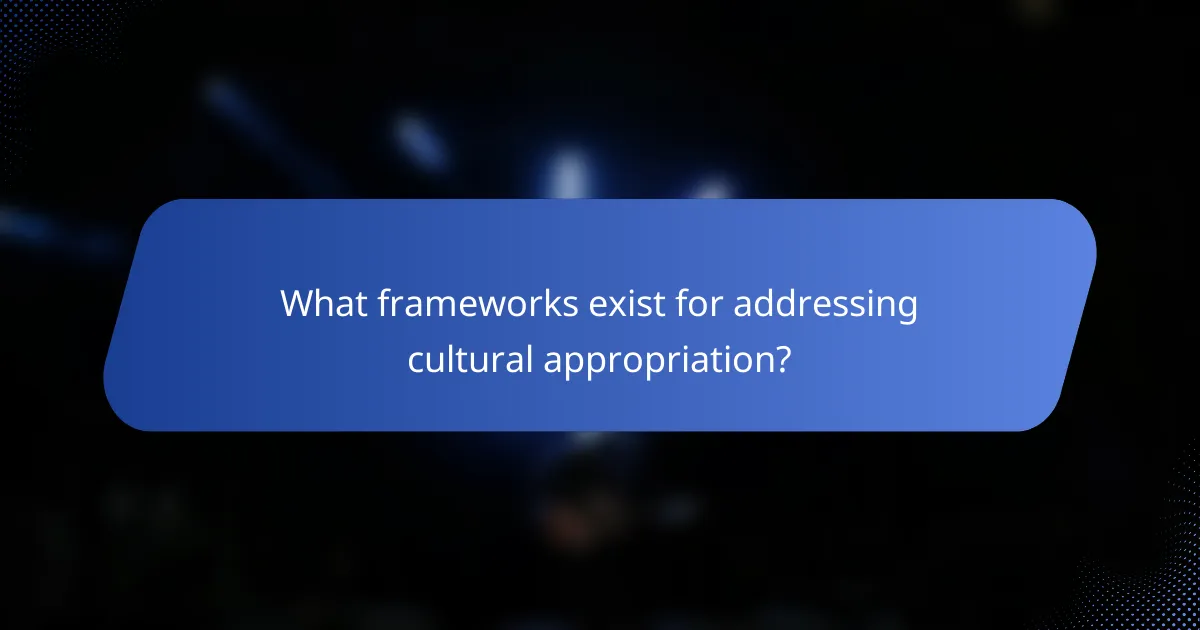
What frameworks exist for addressing cultural appropriation?
Frameworks for addressing cultural appropriation include legal protections, community engagement strategies, and educational initiatives. These frameworks aim to safeguard cultural heritage while promoting respectful representation and collaboration.
Legal protections for cultural heritage
Legal protections for cultural heritage can vary significantly by country, often encompassing intellectual property laws, trademark regulations, and cultural heritage laws. For example, some nations have specific laws that protect indigenous cultural expressions and traditional knowledge from unauthorized use.
In the United States, the Indian Arts and Crafts Act prohibits misrepresentation of Indian arts and crafts, providing a legal avenue for indigenous artists to protect their work. Understanding the legal landscape is crucial for anyone involved in cultural production to avoid potential infringements.
Community engagement strategies
Community engagement strategies focus on fostering dialogue and collaboration between cultural groups and those interested in their heritage. This can include workshops, cultural exchanges, and partnerships that prioritize the voices and perspectives of the originating communities.
For instance, organizations can host events where cultural practitioners share their traditions and stories, allowing for authentic representation. Engaging communities not only helps prevent appropriation but also enriches cultural understanding and appreciation.
![]()
What role do cultural icons play in shaping public perception?
Cultural icons significantly influence public perception by embodying values, beliefs, and trends that resonate with society. They can shape opinions, inspire movements, and reflect or challenge cultural norms, making their impact profound and far-reaching.
Influence of celebrities
Celebrities often serve as cultural icons, wielding substantial power over public opinion and behavior. Their endorsements, lifestyle choices, and social media presence can set trends and influence consumer behavior, particularly among younger audiences.
For instance, a celebrity advocating for environmental sustainability can elevate awareness and motivate fans to adopt eco-friendly practices. However, this influence can also lead to cultural appropriation if celebrities adopt elements from cultures without proper understanding or respect.
Impact of art and literature
Art and literature play crucial roles in shaping cultural narratives and public perception. They can challenge stereotypes, promote diversity, and foster empathy by presenting different perspectives and experiences.
For example, a novel that explores the complexities of identity can encourage readers to reflect on their own beliefs and biases. However, creators must navigate representation issues carefully to avoid perpetuating harmful stereotypes or misrepresenting cultures.

How can brands navigate legacy pressures in cultural marketing?
Brands can navigate legacy pressures in cultural marketing by prioritizing authenticity and sensitivity to the cultures they represent. This involves understanding historical contexts, engaging with community voices, and ensuring that marketing strategies reflect genuine appreciation rather than appropriation.
Case studies of successful brands
Brands like Nike and Adidas have successfully incorporated cultural elements by collaborating with artists and designers from those cultures. For instance, Nike’s partnership with local designers for limited-edition sneakers has showcased cultural heritage while respecting its origins.
Another example is the beauty brand Fenty, which emphasizes inclusivity by offering a wide range of shades for diverse skin tones. This approach not only honors cultural diversity but also sets a standard in the industry for representation.
Ethical marketing practices
Ethical marketing practices involve conducting thorough research and engaging with cultural representatives before launching campaigns. Brands should aim to co-create content with community members to ensure accurate representation and avoid stereotypes.
Additionally, brands can implement guidelines that prioritize respect and authenticity in their marketing efforts. This includes avoiding cultural symbols that may be misused or commodified, and instead focusing on storytelling that highlights the richness of the culture.








